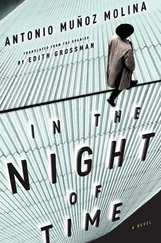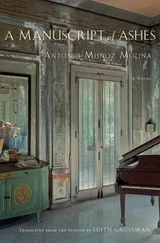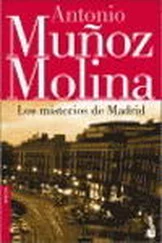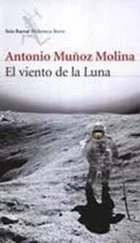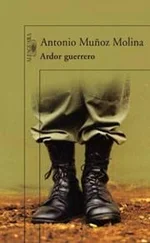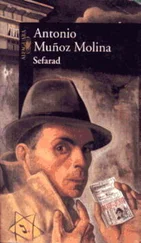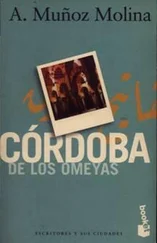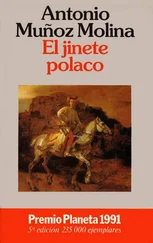I REMEMBER A JEWISH house in a barrio in my native city called the Alcázar, because it occupies the location, still partially walled, where a medieval castle stood, an alcázar, a fortified citadel that belonged first to the Muslims and then after the thirteenth century to the Christians — after 1234 to be exact, when King Ferdinand III of Castile, who in my textbooks was called the Saint, took possession of the recently conquered city. To help us children remember the date, they told us to think of the first four numbers — one, two, three, four — and as if it were one of the multiplication tables we would chant: Ferdinand III, the Saint, conquered our city from the Moors in one thousand, two hundred, thirty, and four.
A mosque first occupied the elevated corner of the Alcázar that was nearly inaccessible from the south and east sides; the Church of Santa María, which still exists although it has been closed many years for a never-ending restoration, was built on the same base. It has, or it had, a Gothic cloister, the only truly old and significant part of the building, which has been restored many times without much thought, especially in the nineteenth century, when around 1880 they added a busy and vulgar facade and a pair of undistinguished bell towers. But I could identify the tolling of their bells from the many heard in the city at dusk, because they were the bells of our parish, and I also knew when they rang for a death or a funeral mass, and on Sundays, at noon and dusk, I recognized the rich peals that announced high mass. Other bells nearby had a much more serious and solemn bronze tone — the bells, for instance, of El Salvador Church, and others had higher and more diaphanous notes, and then there were the bells at the nuns’ convent, which rang in a fortresslike tower that was as forbidding as the rest of the church, with its huge main door that was always closed and the high stone walls darkened with lichen and moss because they faced the cool shade of the north side. From time to time that enormous black studded door would swing open and two nuns would come out, always in pairs, and so pale I thought they must have come from the tomb, in their dark brown habits and with their faces tightly framed in white beneath their wimples, their skin whiter than the cloth, and they always frightened me terribly because I thought they would kidnap me, and I held tighter to the hand of my mother, who had put a black veil over her head to come to church.
I remember the large uneven stones in the Santa María cloister, some of which were gravestones bearing names of persons from long ago carved into a slab and nearly erased by the footsteps of centuries, and I remember a garden you reached through ogival arches, where there was a bay tree so tall that from a child’s perspective the top could not be seen. In the garden shaded by that tree and filled with ferns and weeds, there was always, even in summer, a strong scent of growing things and moist earth, and the garden rang with the uproar of the birds that nested in the thick branches and the long whistles of swallows and swifts in the slow summer afternoons. You could see the dark green thrust of the bay tree from a great distance, like a geyser of vegetation rising higher than the bell towers of the church and the tile roofs in the barrio, and it swayed on windy afternoons. When my mother took me by the hand into the cloister, it made me dizzy to peek out into the garden and see the tree. I always noticed how cool the dirt and the stone were, and I was always deafened by the clamor of the birds, which flew up in a cloud when the bells were rung.
I was sure the tree reached the sky, like the magic beanstalk in the story that my aunts told me and that many years later I read to my oldest son, who from the age of three always begged for a story at bedtime, quickly restless when he knew the story was about to end, asking me to make it last a little longer or read him another or, better still, make up one he liked, and give the characters his favorite personality traits and magic powers, and the names he had to approve. Reading the story at my son’s bedside, I imagined his little hero climbing the branches of that prodigious bay tree at Santa María, up, up toward the sky, and coming out on the other side of the clouds, just as I imagined it when I was a boy. If you looked up, looked hard, the tree swayed slightly even when there was no wind. When a strong wind blew, the sound of the leaves was like that of waves on the shore, which I had never heard except in movies, or when I held a seashell to my ear.
I WENT TO THE CHURCH of Santa María every afternoon during the summer I was twelve to say a few Ave Marias to the Virgin of Guadalupe, the patron saint of my city, whom I asked to intercede for me so I would pass gym in September, because in the June examinations I had failed in a truly humiliating manner. I wasn’t good at sports, I couldn’t climb a rope or vault over a pommel horse, I couldn’t even do a somersault. I had a growing sense of being excluded that was bitterly accentuated by the loss of the comfortable certainties of childhood and the first confusion and fears of my transition to adolescence. Pimples were breaking out on my too round face, fuzz was darkening my upper, still childish lip, hair was growing on the strangest parts of my body, and I was suffering sharp and secret remorse about masturbation, which according to the grim teachings of the priest was not merely a sin but also the beginnings of a series of atrocious illnesses. How strange to have been that solitary, fat, clumsy child who all summer long, at dusk, as the heat was fading, walked to the Alcázar barrio and went inside the cool cloisters of Santa María to pray to the Virgin, stepping on the gravestones of dead buried five or six centuries before, devout but ashamed because that summer I had learned to masturbate and was always surreptitiously looking down women’s necklines and up their naked legs: the white breast, the large dark nipple, and the light blue veins of a barefoot Gypsy nursing her child at the door of one of the huts of the poor who lived at the edge of the barrio, beside the ruined wall.
Sometimes from a distance I would see four or five of the toughest boys in our class sitting on a stone bench in the large plaza in front of the church. They already smoked and went to taverns, and if I walked by them, pretending not to see them, they made fun of me, the way they had jeered at my physical cowardice in the gym and schoolyard. They made fun of me even more when they realized where I was going, the fat little sissy who got good grades but flunked gym and now came to pray every afternoon to the Virgin and more than once went to confession and then stayed for mass and took Communion, with the remorse and anguish of not having dared confess everything to the priest, who asked the formulaic questions and in the dark traced the sign of the cross as he murmured the penance and absolution — that there was a further sin he couldn’t say the name of but only allude to using a vague euphemism: he had committed an impure act. The Catholic doctrine accustomed us to the solitary struggle with ourselves at an early age, to the contortions of guilt; an impure act was a mortal sin, and if you didn’t confess it then you couldn’t be absolved, and if you came to take Communion in a state of mortal sin, you were committing another, equally grave as the first, which was added to it in the secret ignominy of your conscience.
My first marriage took place in the Church of Santa María, when I was twenty-six. Maybe because of the confusion and tension of the ceremony, and the dizzying number of guests, I didn’t take a good look at the great bay tree in the cloister, although now I am struck by the alarming thought that they may have cut it down, which wouldn’t have been unusual in a city so addicted to arboricide. The young man with the mustache and razor-cut hair, wearing a navy-blue suit and pearl-gray necktie, seems even more remote to me than the pious and ashamed boy of fourteen years before. Throughout that time, he had perfected the skills that he already glimpsed as his in early adolescence: the art of being what he was expected to be and at the same time rebelling in surly silence, the cleverness of hiding his true identity and nourishing it with books and dreams while presenting an attitude of meek acquiescence on the outside. Thus he lived in exile, at a distance as false as a perspective of open country painted on a wall, or as those cinematic backgrounds against which an actor is driving a convertible at top speed along a cliff without ruffling a hair of his head and the passing trees fail to throw a shadow on the windshield.
Читать дальше

